A full design case study is available on request
Discover the showcase
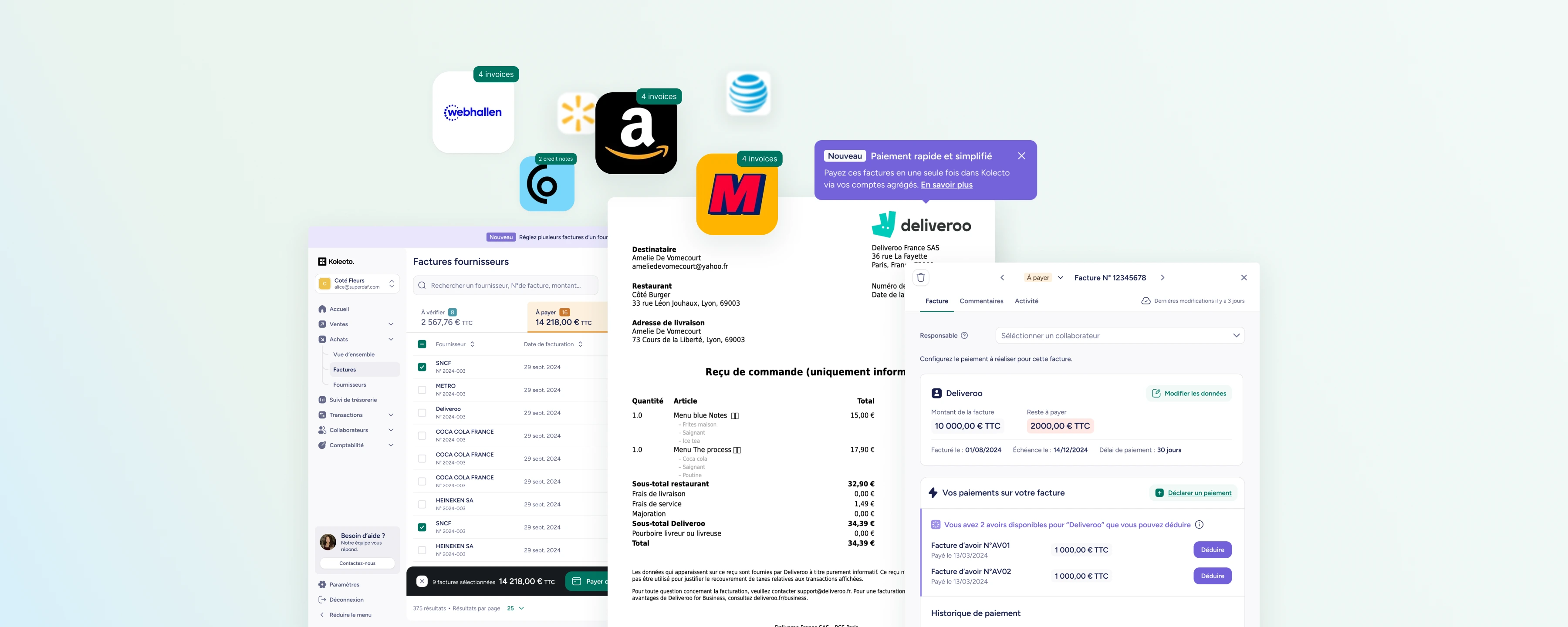
Kolecto simplifies accounting and financial management for companies of all sizes. After beta testing, the team focused on acquiring SMEs, but lacked key features needed to acquire and get them sign.
As part of the Payment squad, I was in charge of the invoice payment flow, from invoice reception to payment, to address SMEs’ core needs.
Guided by design principles such as giving users control, safety, and clarity, this body of work demonstrates how I created user value while navigating design system constraints, technical limitations, and AI prototyping for collaboration.
As well as increasing number of invoices treated per months
For SMEs segment
After 3 months of use for SMEs segment (active users - 10 invoices min. /month)
I designed a new dashboard to give users better visibility into their invoices and show what they can achieve with Kolecto. I improved the interface to build confidence in their actions and clarified the entire invoice workflow from reception to payment.
By highlighting key actions, creating clearer sections, and adding more guidance and control, I made invoice payment easier and more intuitive.
These changes help users understand what's happening faster, make better decisions, and adopt our solution more confidently for long-term use.

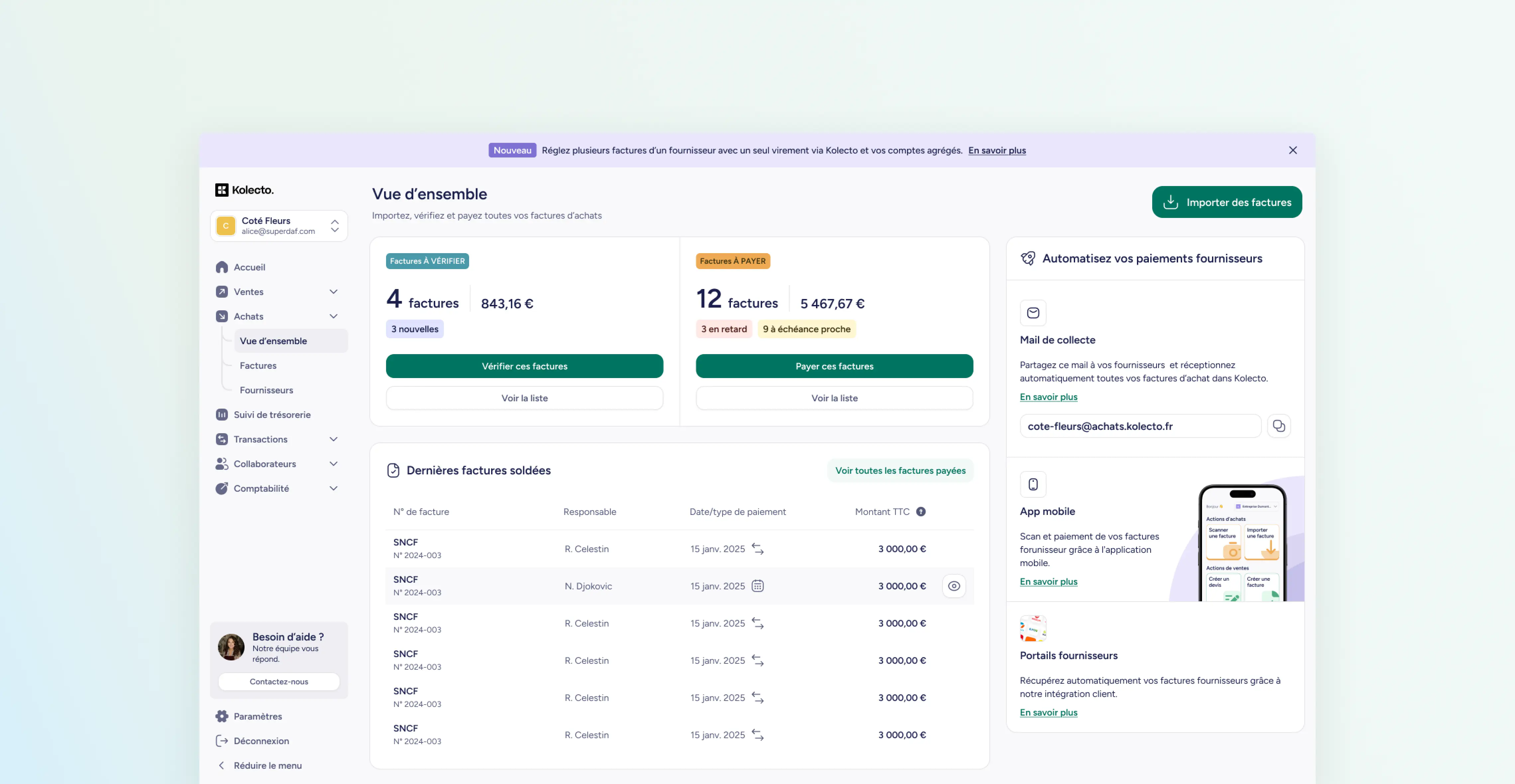

The first interaction with a product is critical. Handling invoices can be clumsy: users juggle multiple providers, distinguish between regular invoices and credit notes, and often find the transition from physical to digital solutions intimidating, especially those less familiar with digital tools (most of our users!).
From the start of the workflow, the product provides clear, contextual actions to help users progress with confidence. It adapts to user input, offering smart suggestions like creating a new provider before moving forward. That build trust and ease the process.
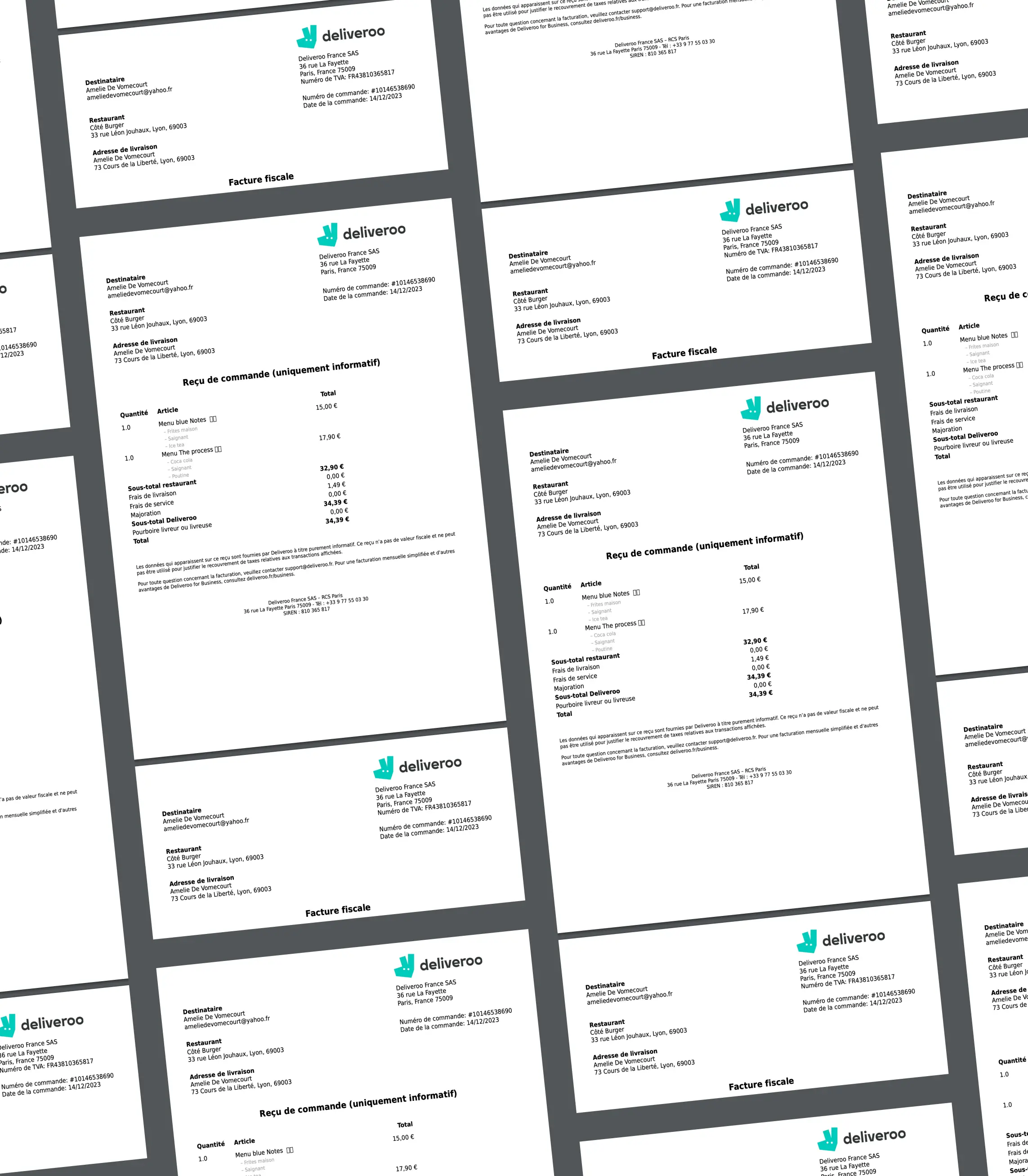
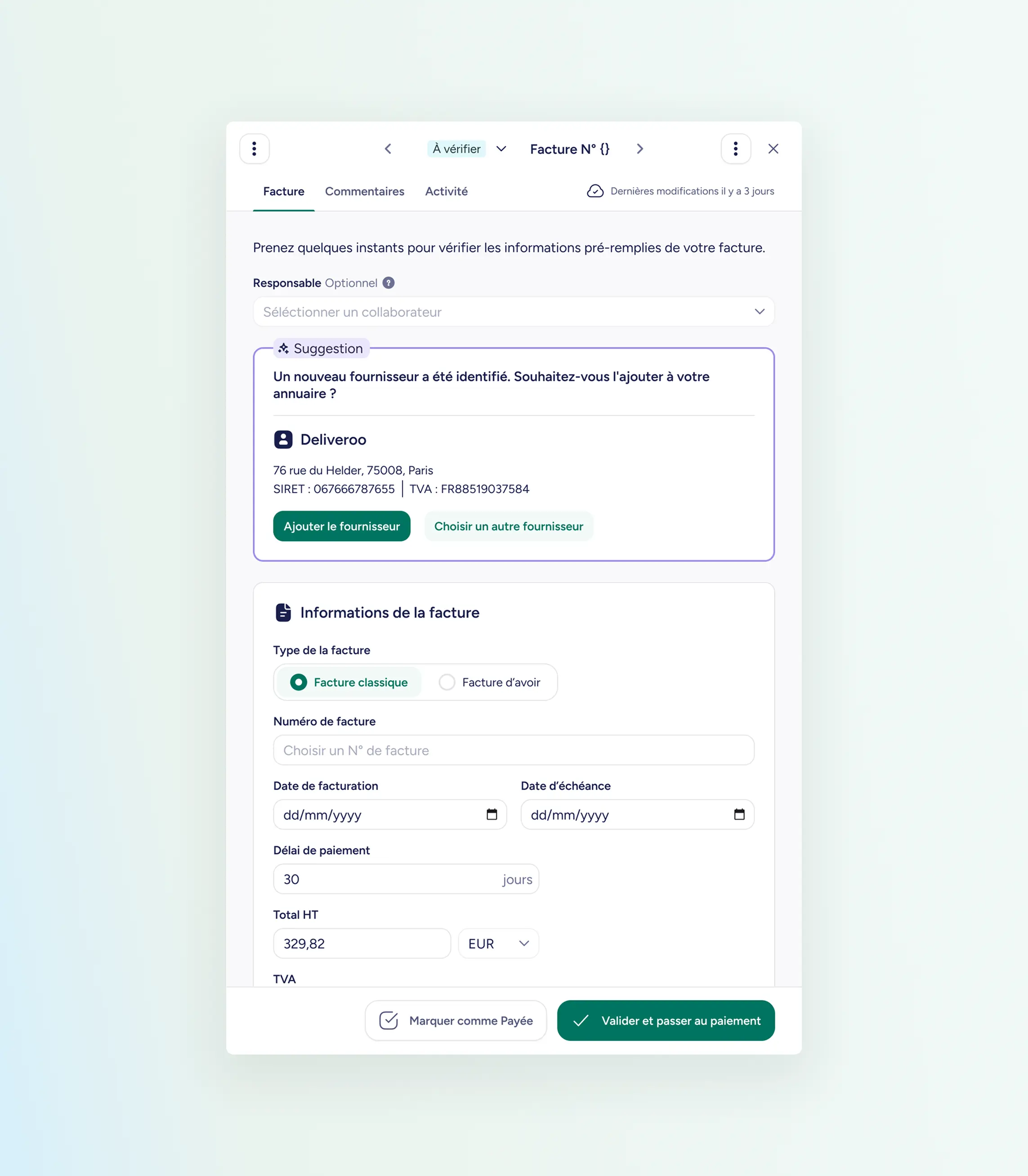
Payment is even more critical. I improved the process to better reflect how businesses handle invoices by adding flexibility to declare external payments, integrating credit notes, and maintaining clear visibility and smart suggestions at every step. These essential features were missing in the initial version.
I explored validation workflows to give larger organizations more control over payments. Although user testing showed strong interest, the feature was deprioritized due to technical constraints and a high effort-to-impact ratio.
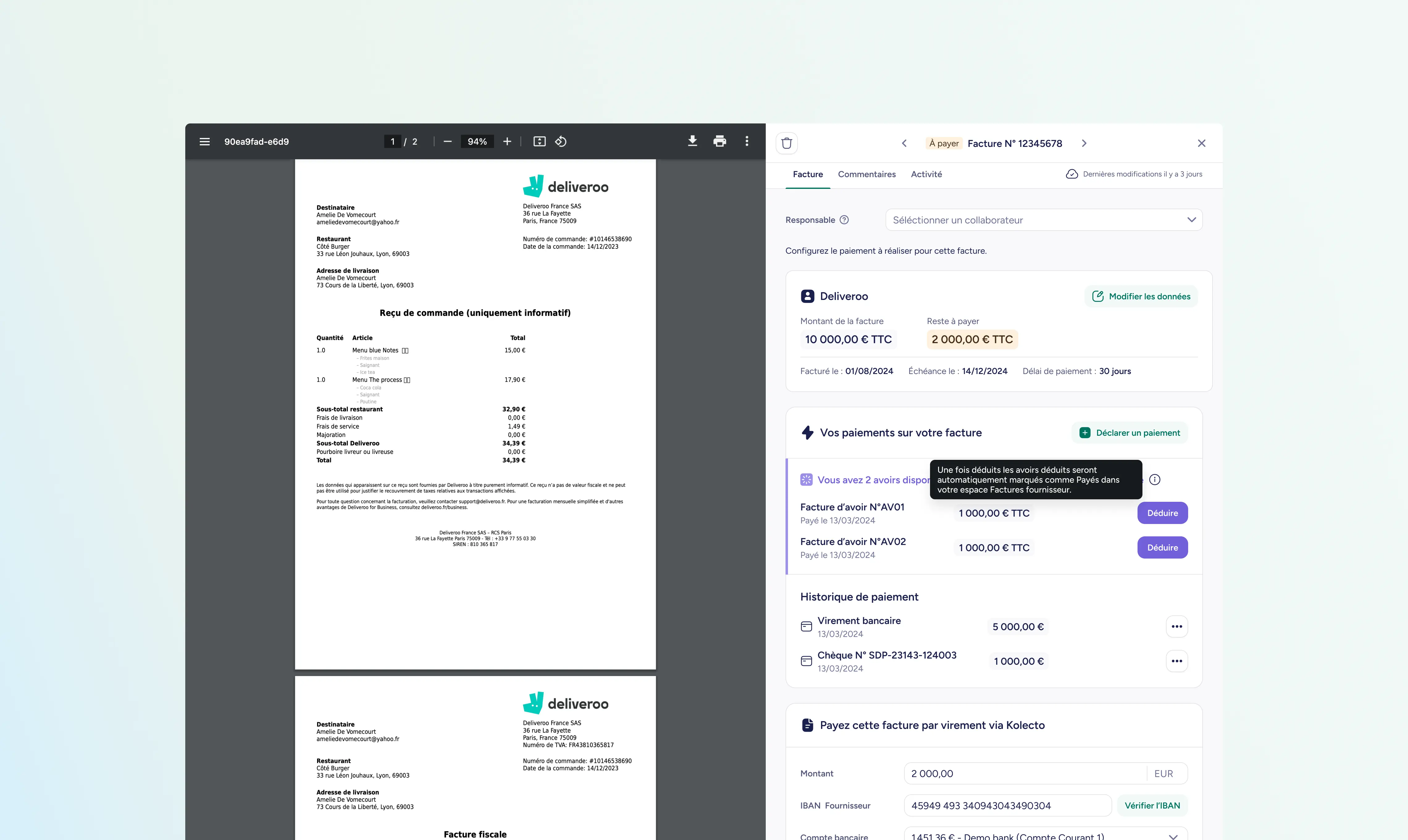
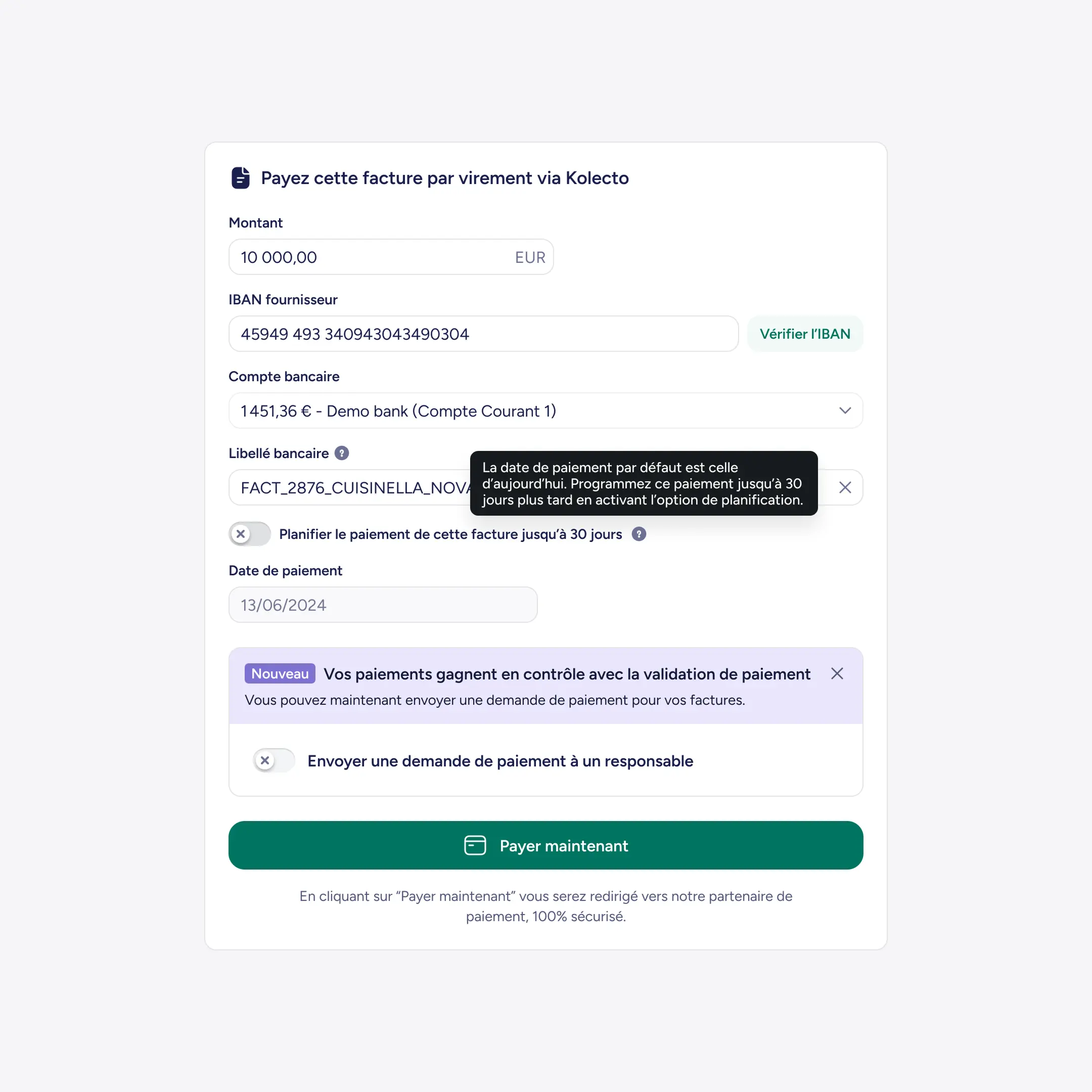

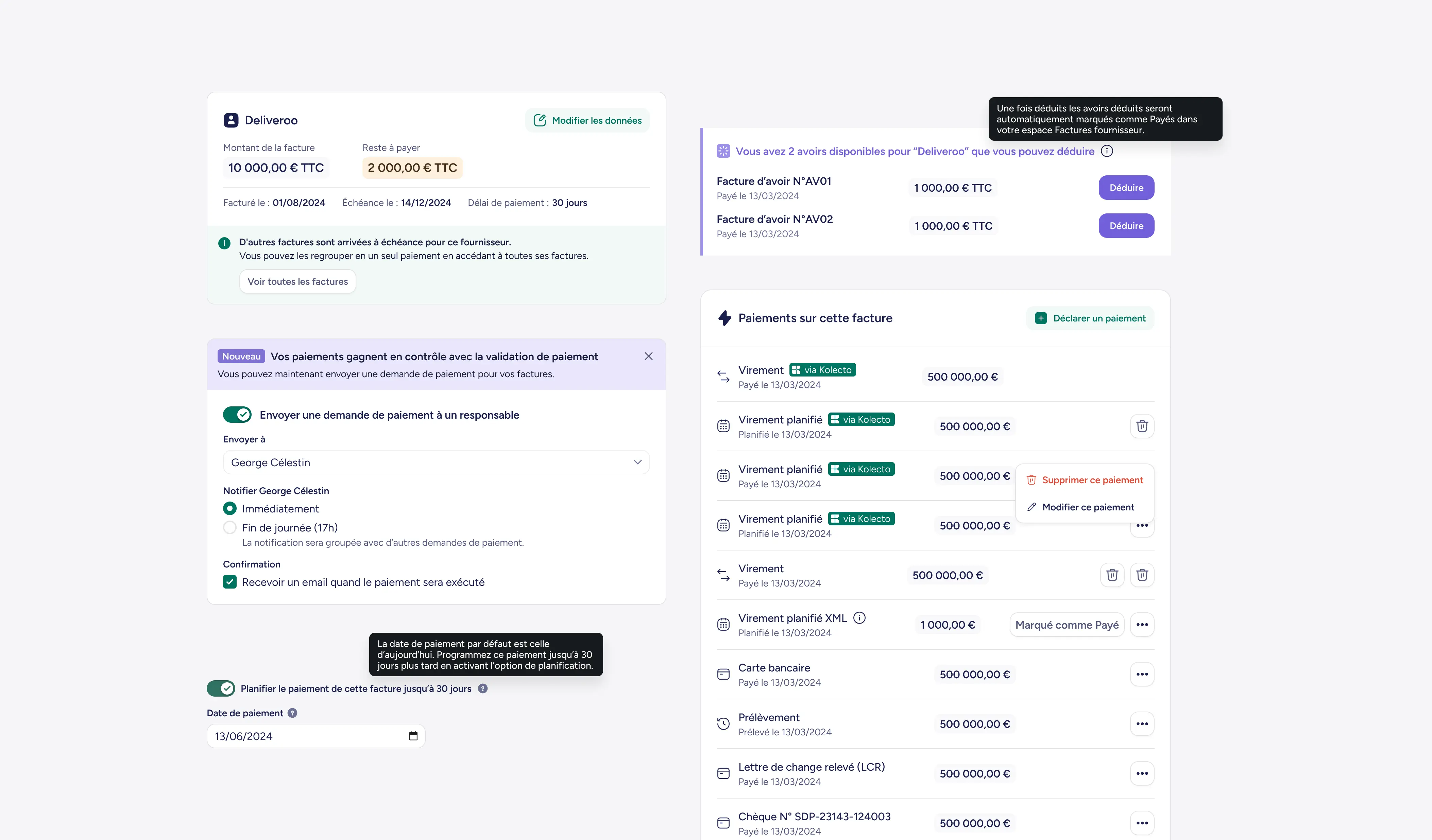
After conducting user interviews, I learned that businesses typically pay invoices in batches, as it better fits their existing workflows. However, our initial solution didn’t support this behavior. One of our product principles was to align with how customers are used to handling invoices in the physical world.
We developed Bulk Payments, a feature that lets users pay several invoices from the same provider at once, add credit notes on the go, and choose which invoices to pay based on their criticality. This gives customers better visibility over invoices for each provider and serves SMEs more effectively, creating a unique value proposition in the market.
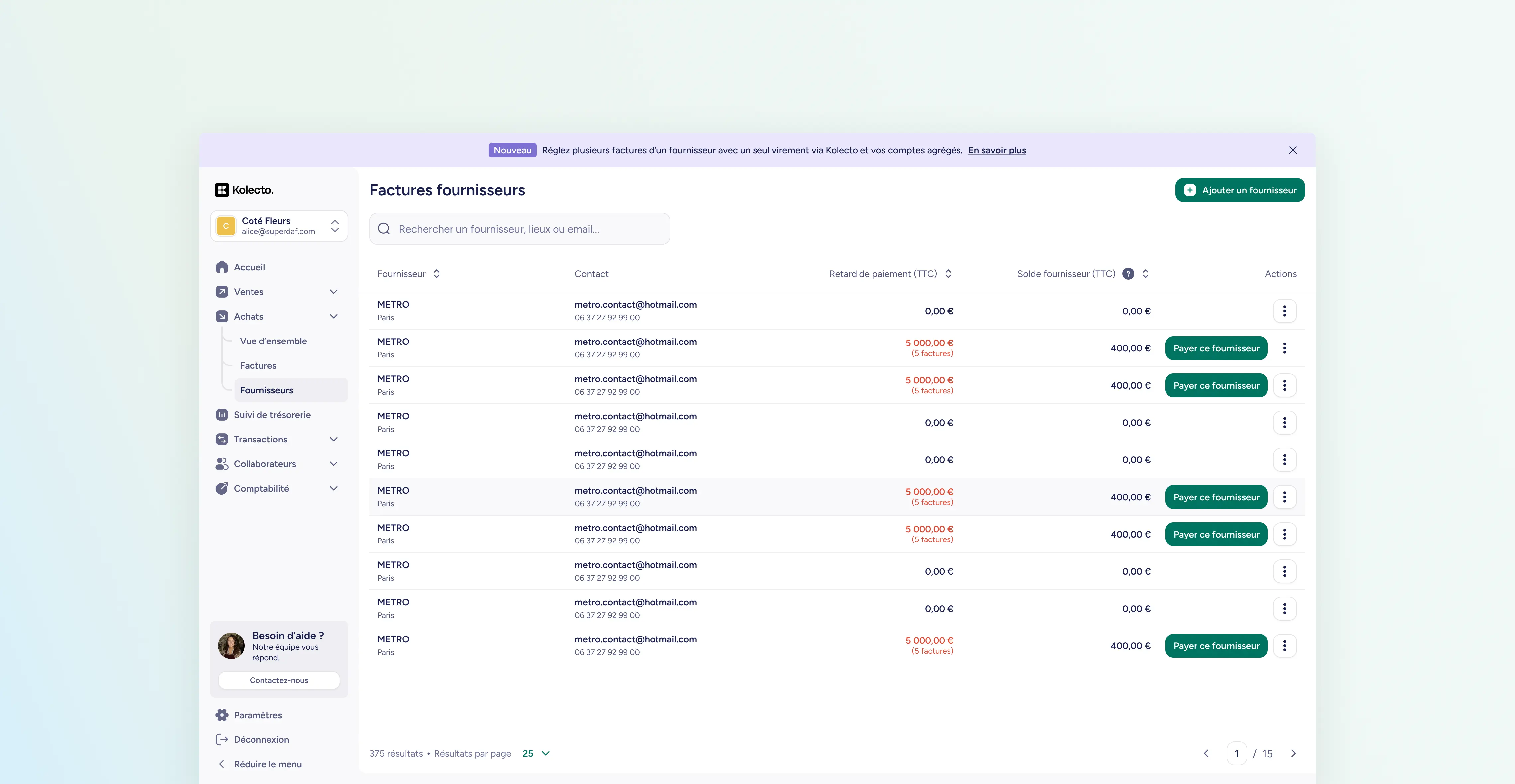
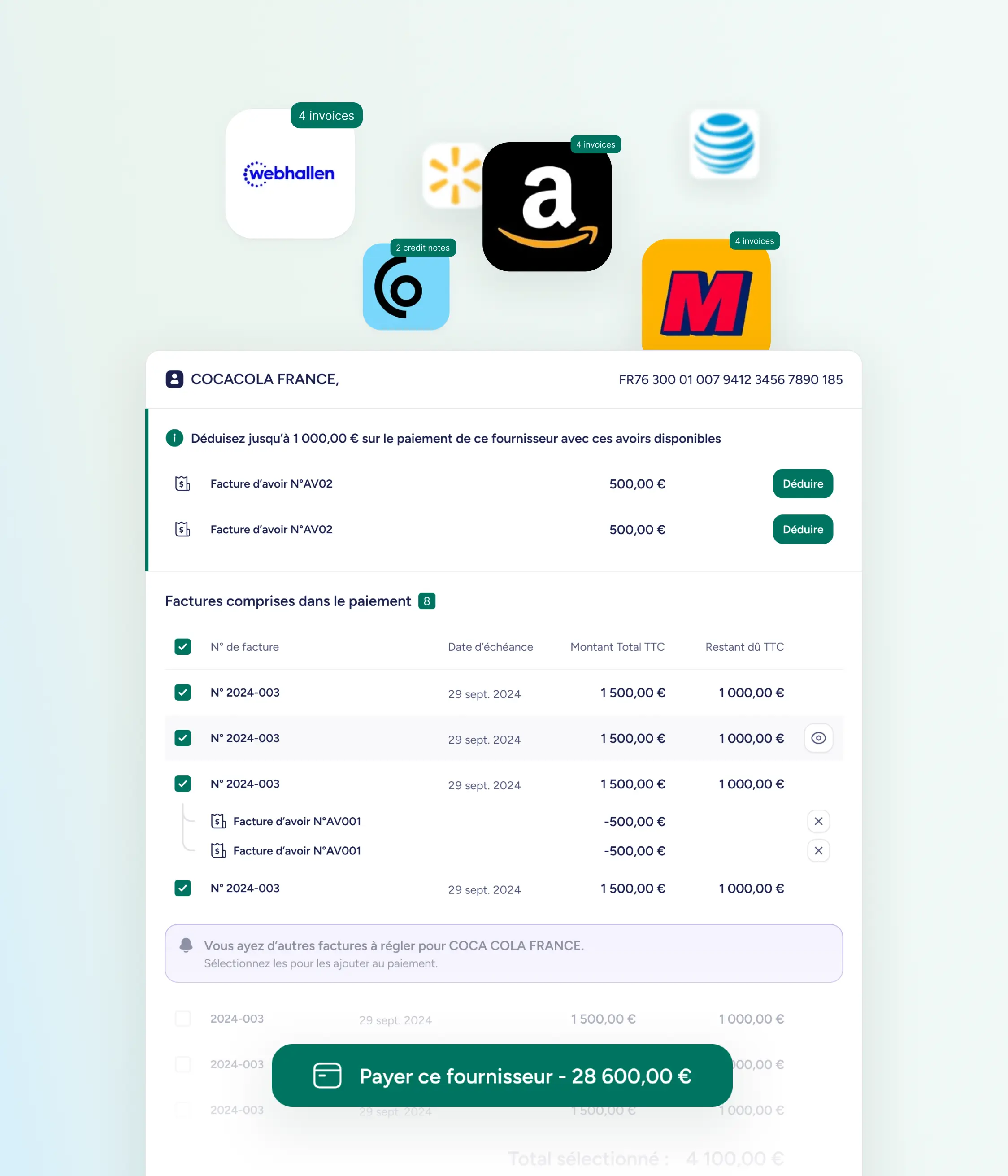
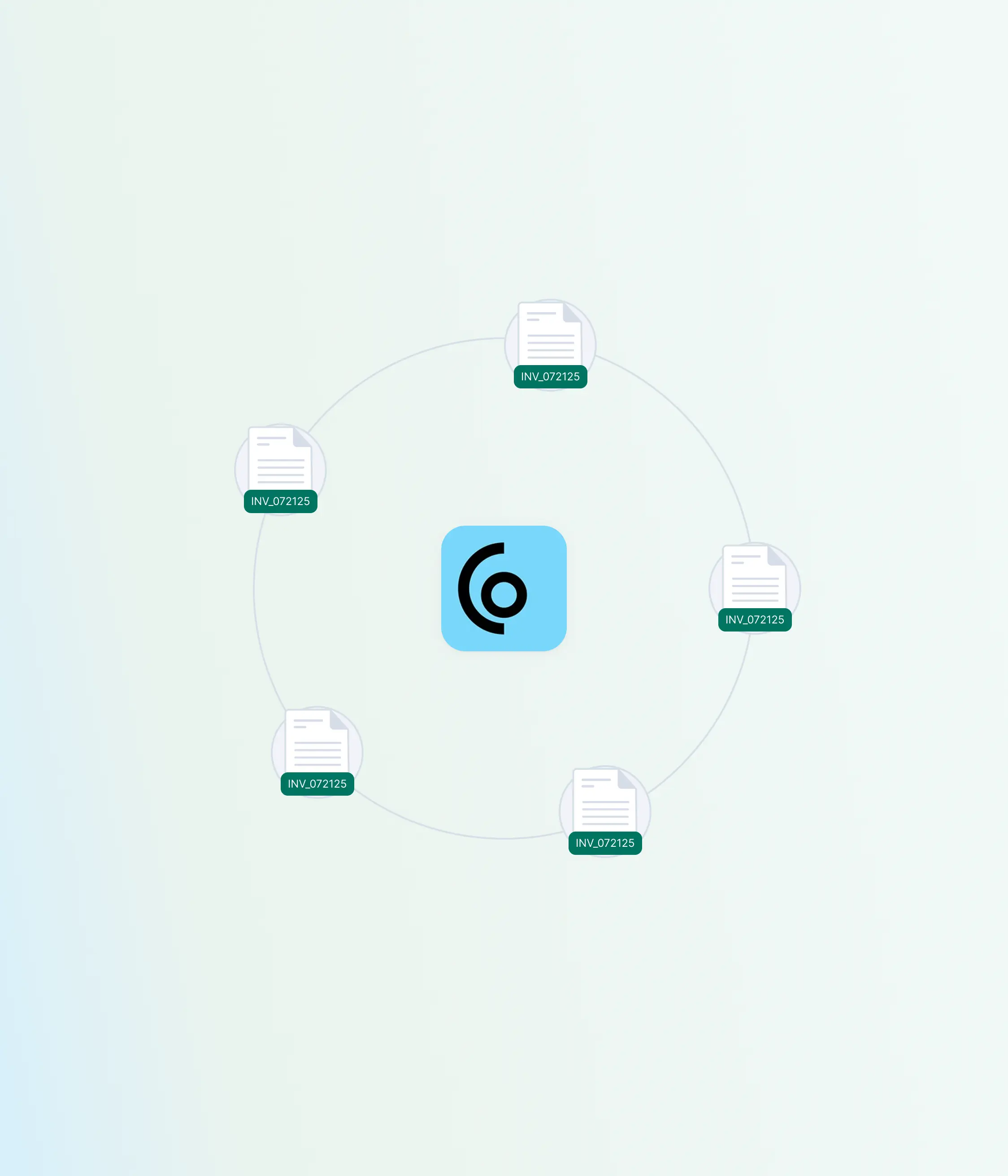
Working with limited technical resources required careful prioritization.
I prioritized efficiently and collaborated closely across teams. I worked with the design system team to integrate or adapt existing components that aligned with our product principles.
Instead of creating custom elements that could slow development, I focused on reusing components to maintain consistency, accessibility, and scalability, without compromising the user experience.
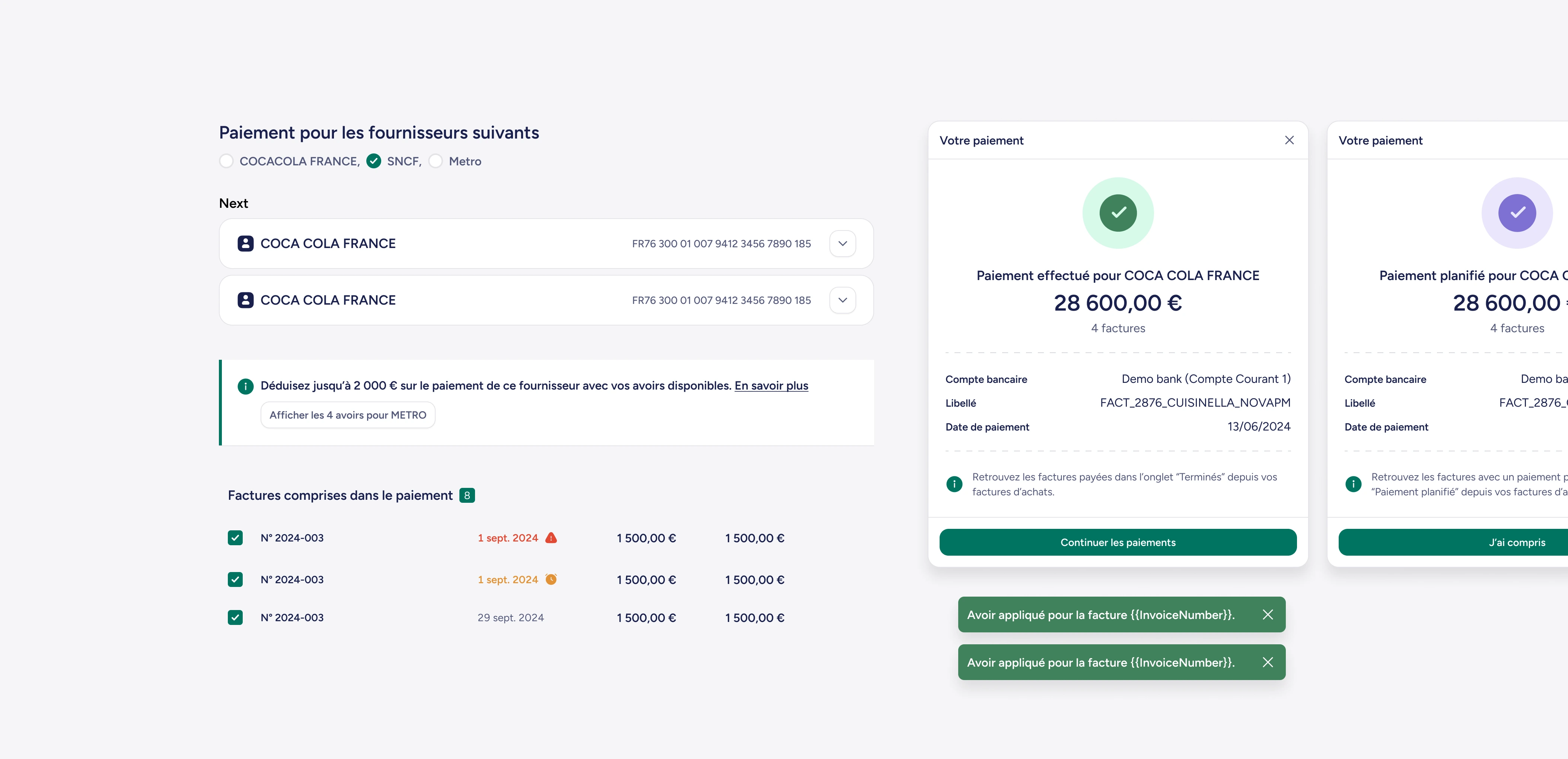
Figma prototypes often fall short of reflecting real product behavior, which can create friction and confusion during reviews. Despite strong prototyping skills, I found it difficult to fully convey interactions, especially to stakeholders expecting something closer to the real product.
When v0 by Vercel came out, I saw an opportunity to build a truly interactive prototype that covered not just the core experience but also edge cases. I wanted something testable, demo-ready, and useful for collecting feedback across the team.
150 prompts later in only 2 days, I had a fully functional prototype, ready for user testing, team demos. I started small and improved the quality as I went, implementing ideas along the way. I was then ready to work backward into the final UI in Figma.
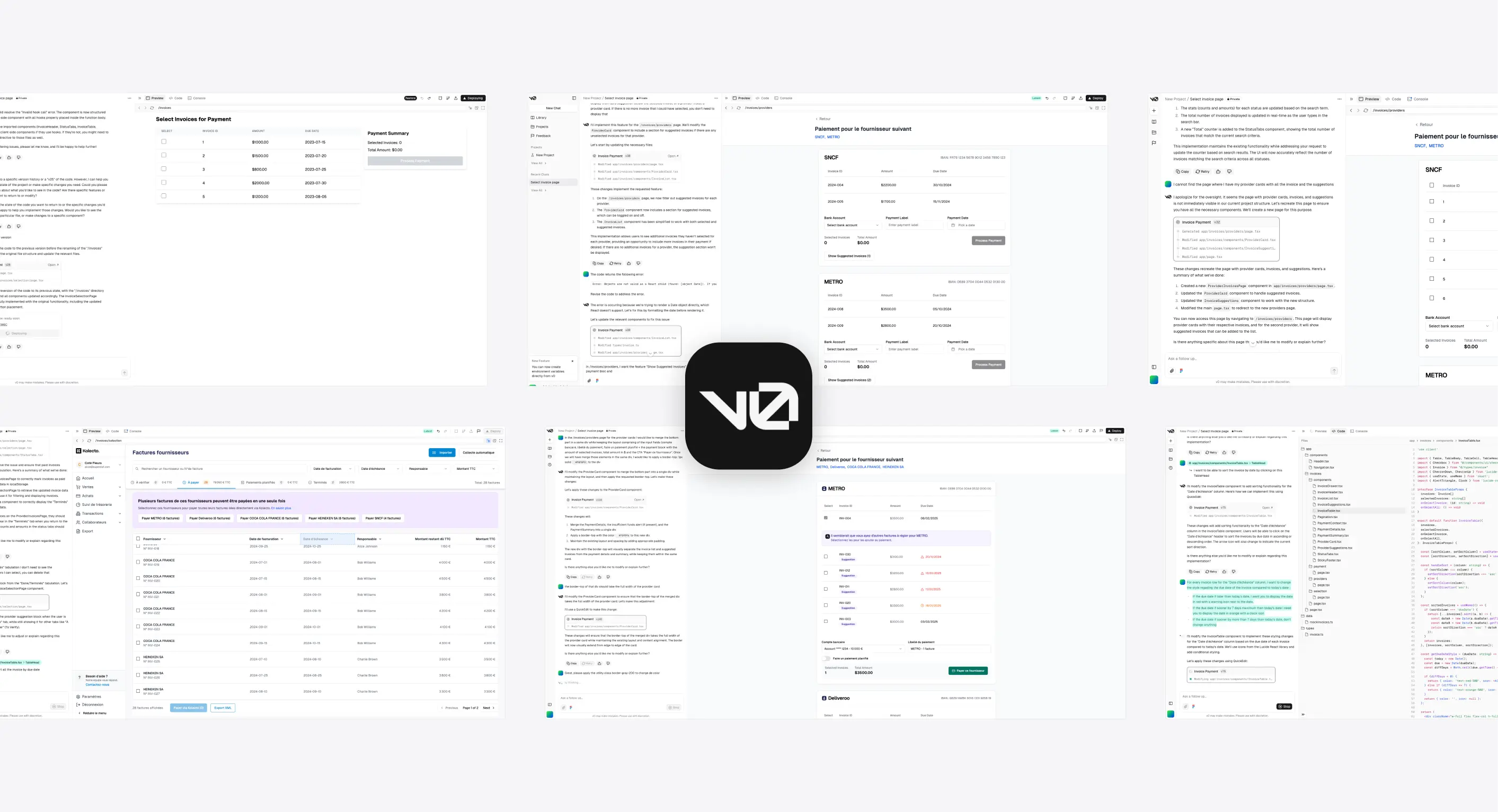
This project was about more than improving an invoice flow, it was about empowering SMEs with a product that feels intuitive, trustworthy, and aligned with the way they already work. From first interaction to final payment, I focused on giving users clarity and control while balancing technical constraints, scaling through design systems, and accelerating iteration with AI prototyping.
By addressing real business behaviors like bulk payments and edge cases, I helped shape a solution that not only increased adoption but delivered lasting value to both users and the business.
As well as increasing number of invoices treated per months
For SMEs segment
After 3 months of use for SMEs segment (active users - 10 invoices min. /month)
By contacting me, I will provide you the full story
through a presentation deck that covers how I got there.